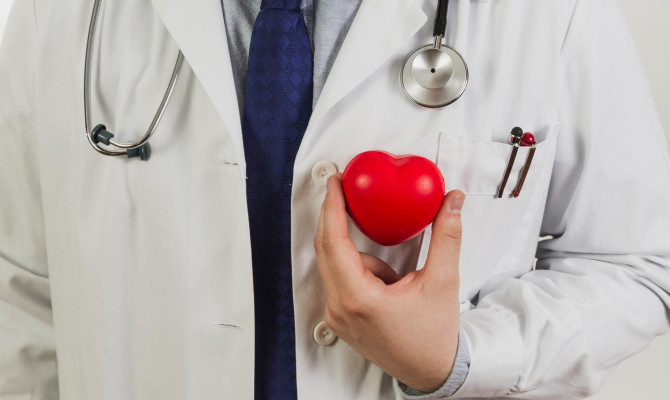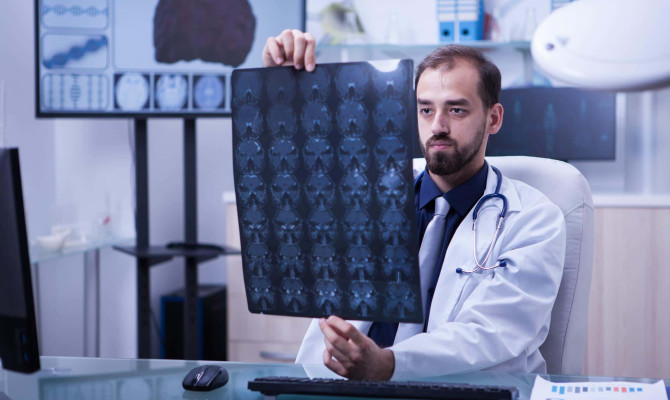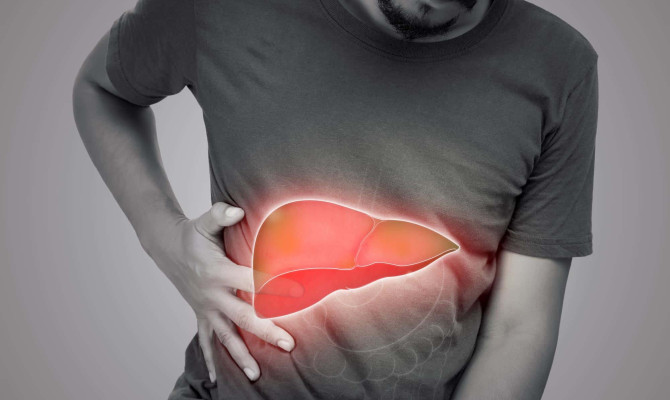Blood Cancer : A General Overview

- Blood Cancer
- 14 Aug 2023
Overview
What is Blood cancer?
A type of cancer affecting the development and functioning of blood cells is called blood cancer, also known as hematologic cancer or haematological malignancy. It happens when abnormal blood cells develop and divide out of control, interfering with the immune system’s and blood’s regular operations.

Prevalence
How common is Blood Cancer?
Regional variations in the prevalence of blood cancer are significant globally. The Global Cancer Observatory of the World Health Organization reports that the incidence of blood cancer is most notable in North America, Europe, and Australia/New Zealand, while it is lowest in Africa and Asia.
Leukaemia is the most common type of blood cancer, accounting for about 35% of cases. About 30% of cases of myeloma and 10% of lymphoma cases, respectively.
In general, blood cancer incidence has been rising in many regions of the globe recently, though this may partly be attributed to better detection and diagnosis.
Types
What are the types of Blood Cancer?
Leukemia
- The spongy tissue inside bones called the bone marrow, where blood cells are made, is affected by this type of malignancy.
- White blood cells produced by leukaemia are abnormal, unable to operate normally, and may crowd out healthy blood cells.
- The four main forms of leukaemia are acute myeloid leukaemia (AML), acute lymphoblastic leukaemia (ALL), chronic lymphocytic leukaemia (CLL), and chronic myeloid leukaemia.1What are the types of leukemia? | Researched based study from nih.gov
Lymphoma
- The lymphatic system, a part of the immune system, is affected by this specific type of cancer.
- When the body produces abnormal lymphocytes, a specific type of white blood cell that can develop uncontrollably and form tumours, it is known as lymphoma.
- The two main types of lymphoma are Hodgkin lymphoma and Non-Hodgkin lymphoma.
Myeloma
- A subset of white blood cells called plasma cells, which produce antibodies to fight infection, are impacted by this specific type of cancer.
- The abnormal plasma cells that myeloma leads the body to produce can build up in the bone marrow and develop into tumours.
- Because it can impact various body parts, it is also sometimes called multiple myeloma.
Causes
What are the root causes of blood cancer?
- Genetics: Blood cancer has a genetic tendency and may be brought on by inherited genetic mutations.
- Radiation: Ionizing radiation exposure can harm DNA and raise the chance of developing blood cancer at high doses, as in nuclear accidents or radiation therapy.
- Chemicals: Exposure to certain toxins and chemicals, including benzene and formaldehyde, can increase the chance of developing blood cancer.
- Infections caused by viruses: Some viruses can weaken the immune system and raise the chance of blood cancer.
- Prior therapy: Previous chemotherapy or radiation therapy for other types of cancer can increase the chance of developing blood cancer.
- Immunosuppression: Those with compromised immune systems, such as HIV/AIDS or organ transplant recipients, are more vulnerable.
- Blood cancer risk can rise in medical situations like myelodysplastic syndrome (MDS).
- Age: Blood cancer is more prevalent in older people because as people age, their risk of genetic mutations and other blood cancer-causing risk factors rises.
- Blood cancer symptoms can vary based on the type of blood cancer and the disease’s stage. 1What are the root causes of blood cancer? | Researched based study from nih.gov
Symptoms
Symptoms
The following are some typical symptoms of blood cancer
- Unaccounted-for weight reduction.
- Weakness and exhaustion.
- Infections that recur frequently or stay persistent.
- Night-time perspiration.
- Lymph glands that are swollen, particularly in the neck, armpits, or groin.
- Minor bleeding or bruising, such as gingival bleeding or repeated nosebleeds.
- Breathing difficulty.
- Chest pain or distress, stomach ache or bloating.
- Bone discomfort or stiffness.
Diagnosis
Diagnosis of Blood Cancer
- Blood tests, a bone marrow biopsy, and a physical evaluation are frequently used to diagnose blood cancer.
- A complete blood count (CBC), which counts the various blood cell types, and blood chemistry tests, which assess organ performance and electrolyte levels, are examples of blood tests.
- A bone marrow biopsy uses a syringe to remove a tiny portion of bone marrow tissue from the hipbone or breastbone. After that, a microscope searches for abnormal cells in the sample.
- Other diagnostic tests like CT scans, MRIs, or X-rays may be performed to look for any cancerous growths.
- Specialized tests were necessary to identify the precise type and subgroup of leukaemia to diagnose blood cancer accurately.
- Once a diagnosis is made, treatment may include chemotherapy, radiation therapy, stem cell transplantation, or a combination of these treatments depending on the type and stage of cancer. 5Diagnosis of blood cancer | Researched based study from Cancer.gov
Treatment

What are the Treatment strategies for Blood Cancer?
- The type and stage of the disease and other personal characteristics like age and general health influence the course of treatment for blood cancer.
- Chemotherapy, radiation therapy, stem cell transplantation, and targeted therapy are the primary methods of treating blood cancer.
- Chemotherapy, administered orally or intravenously, uses medicines to destroy cancer cells.
- In radiation therapy, high-energy X-rays or other types of radiation are used to destroy cancer cells and shrink tumours.
- Healthy stem cells from a donor or the patient’s body are used in a stem cell transplant to replace diseased or damaged bone marrow.
- Drugs that precisely target cancer cells are used in targeted therapy, which may be combined with chemotherapy or radiation treatment.
- The treatment strategy may include supportive care like blood transfusions, antibiotics, and pain management. 2What are the treatment strategies for blood cancer?| Researched based study from nih.gov
- Treatment may be administered in stages with breaks in between to give the body time to heal.
- Following treatment, it’s important to receive follow-up care, which may involve frequent check-ups and imaging tests to look for any signs of cancer recurrence.
Adverse Effects
Common adverse effects
Although treatments for blood cancer can be successful, they can also have unfavorable adverse effects. Here are a few typical negative effects of treatment for blood cancer.
- Fatigue, a sense of extreme exhaustion and weakness, can be brought on by chemotherapy and radiation therapy.
- Chemotherapy and radiation treatment both have the potential to cause nausea and vomiting, which can range from mild to severe.
- Radiation and chemotherapy treatments both carry the risk of causing temporary or irreversible hair loss.
- Infections are more likely to proliferate when the immune system is compromised by chemotherapy and radiation treatment.
- Anaemia, red blood cell counts can be decreased by chemotherapy and radiotherapy treatment, resulting in anaemia.
- Bleeding and bruising are caused by a reduction in platelets, which also causes swelling and haemorrhaging.
- Oral and throat ulcers and mouth sores can make it challenging to consume and drink.
- Gastric problems can cause diarrhoea, ranging in severity from mild to severe.
- Skin alterations, including skin rash, discolouration, and dryness.
- Chemotherapy and radiation can harm the reproductive systems, resulting in infertility.
- Damage to the nerves causes neuropathy, which causes discomfort, tingling, and numbness in the hands and feet.
- Effects on the mind and emotions could include worry, depression, and recurrence-related phobias. 4Common adverse effects | Researched based study from cdc.gov
It’s important to review these possible side effects with your doctor and to let them know about any symptoms you have while receiving therapy.
Prevention
Prevention
Blood cancer cannot be avoided entirely, but lifestyle decisions and safety measures may help lower the chance. Here are some potential tactics:
- Regular exercise can strengthen the immune system, help you maintain a healthy weight, and reduce your risk of developing cancer.
- Avoid coming into contact with dangerous substances like benzene, known to cause cancer and frequently found in gasoline, plastics, and other goods.
- Avoid or stop smoking, as both can increase your chance of developing cancer, including blood cancer.
- Drink in moderation; excessive alcohol intake has been associated with an increased risk of blood cancer.
- Take precautions against viruses like the human T cell leukaemia virus (HTLV) and the Epstein-Barr virus, which can raise the chance of blood cancer. (EBV).
- Be aware of your family’s history of cancer and talk to your doctor about it. Consume plenty of fruits, veggies, whole grains, and lean proteins as part of a healthy diet.
- To lessen the chance of STIs, which can cause blood cancer, engage in certain sexual behaviour.
- Get regular check-ups and screenings to detect any potential health issues early on . 3Prevention | Researched based study from cdc.gov
Suggestions
Living with Blood Cancer
- Keep in constant contact with the medical staff. Attend all appointments as planned, and bring up any worries or symptoms you may be experiencing.
- Consume a nutritious, balanced meal. Pay special attention to eating nutrient-dense foods like fruits, veggies, whole grains, and lean proteins.
- Continue to be busy. Even light exercise, like walking or yoga, can help you feel healthier generally and less stressed.
- Sleep and relax enough. Prioritize obtaining enough sleep and create a consistent sleep schedule.
- Look for psychological support. Think about connecting with individuals coping with blood cancer or joining a support organization. You can also look into expert counselling or therapy to help you deal with the emotional effects of your diagnosis.
- Maintain your emotional well-being. Use methods to help you cope with stress, like deep breathing routines or mindfulness meditation.
- Think about complementary treatments. Some individuals discover that complementary therapies, like acupuncture or massage therapy, can aid in symptom management and stress reduction.
Any feedback on this article?
 This Articles content was accurate
This Articles content was accurate Very Informative Article
Very Informative Article I have a question or a comment
I have a question or a comment
 This article contains inaccurate content
This article contains inaccurate content This article was not helpful
This article was not helpful I have a question or a comment
I have a question or a comment
We appreciate your helpful feedback!
Checkout our social pages
References
-
National Institutes of Health
Leukemia/Types/Etiology
-
National Institutes of Health
Acute Lymphocytic Leukemia/Treatment
-
Centers for Disease Control and Prevention
How to Prevent Cancer or Find It Early?
-
Centers for Disease Control and Prevention
Side Effects of Cancer Treatment
-
National Cancer Institute
How Cancer Is Diagnosed






































